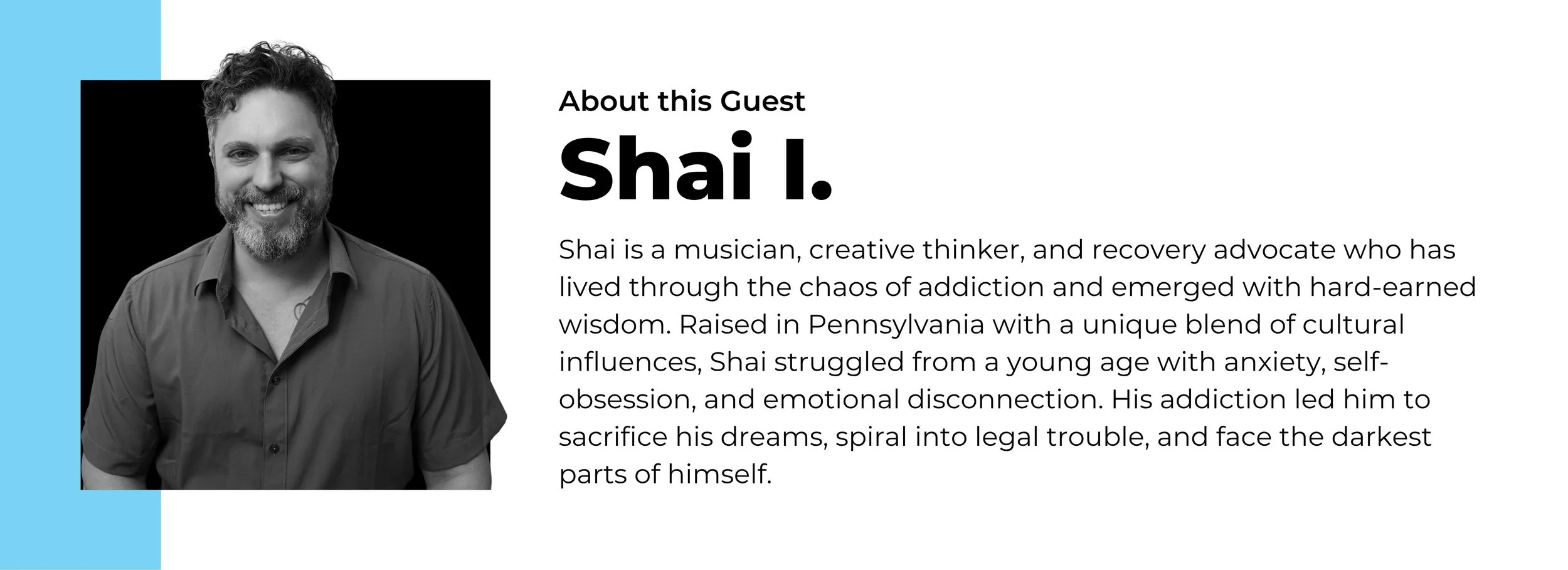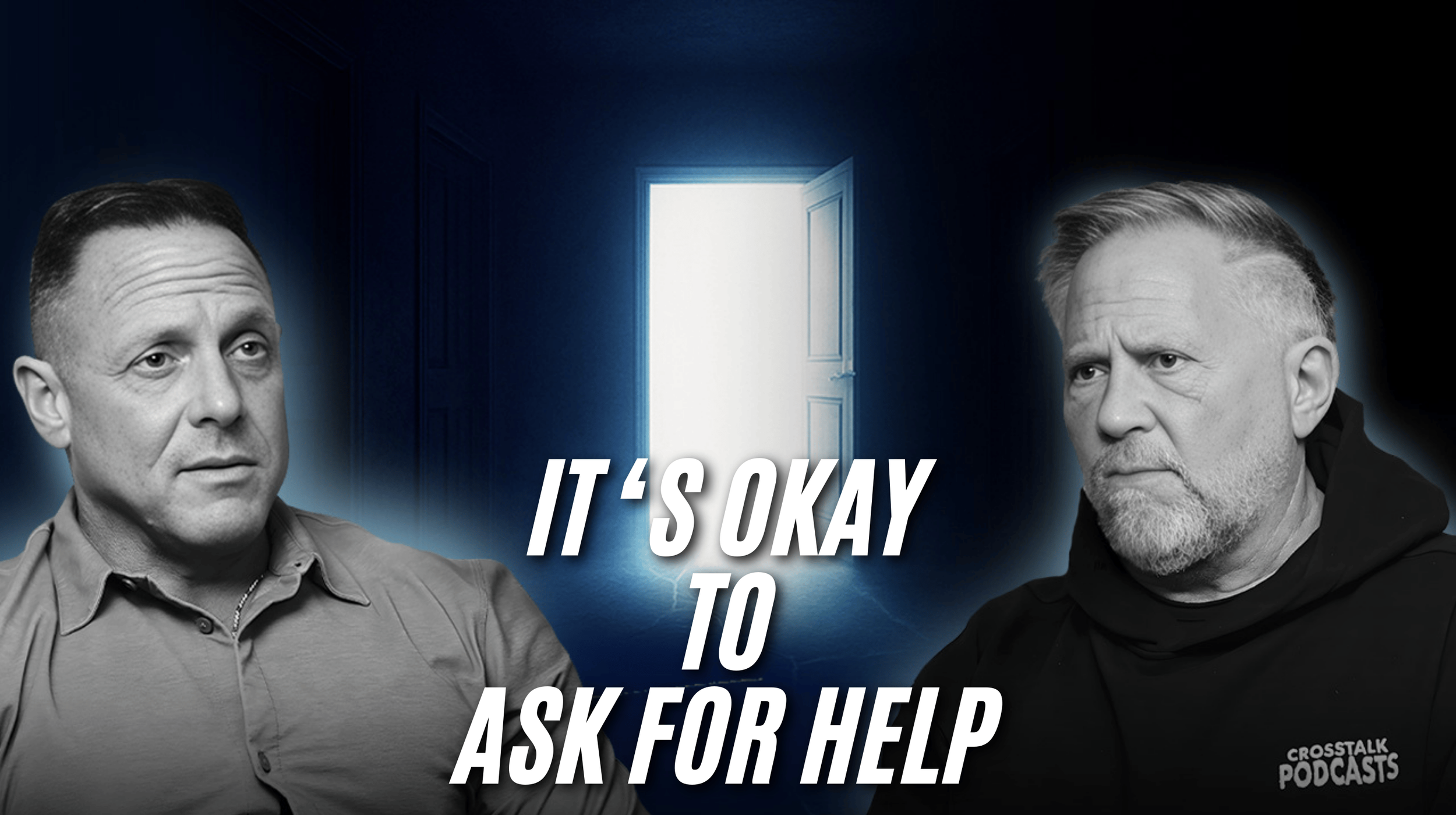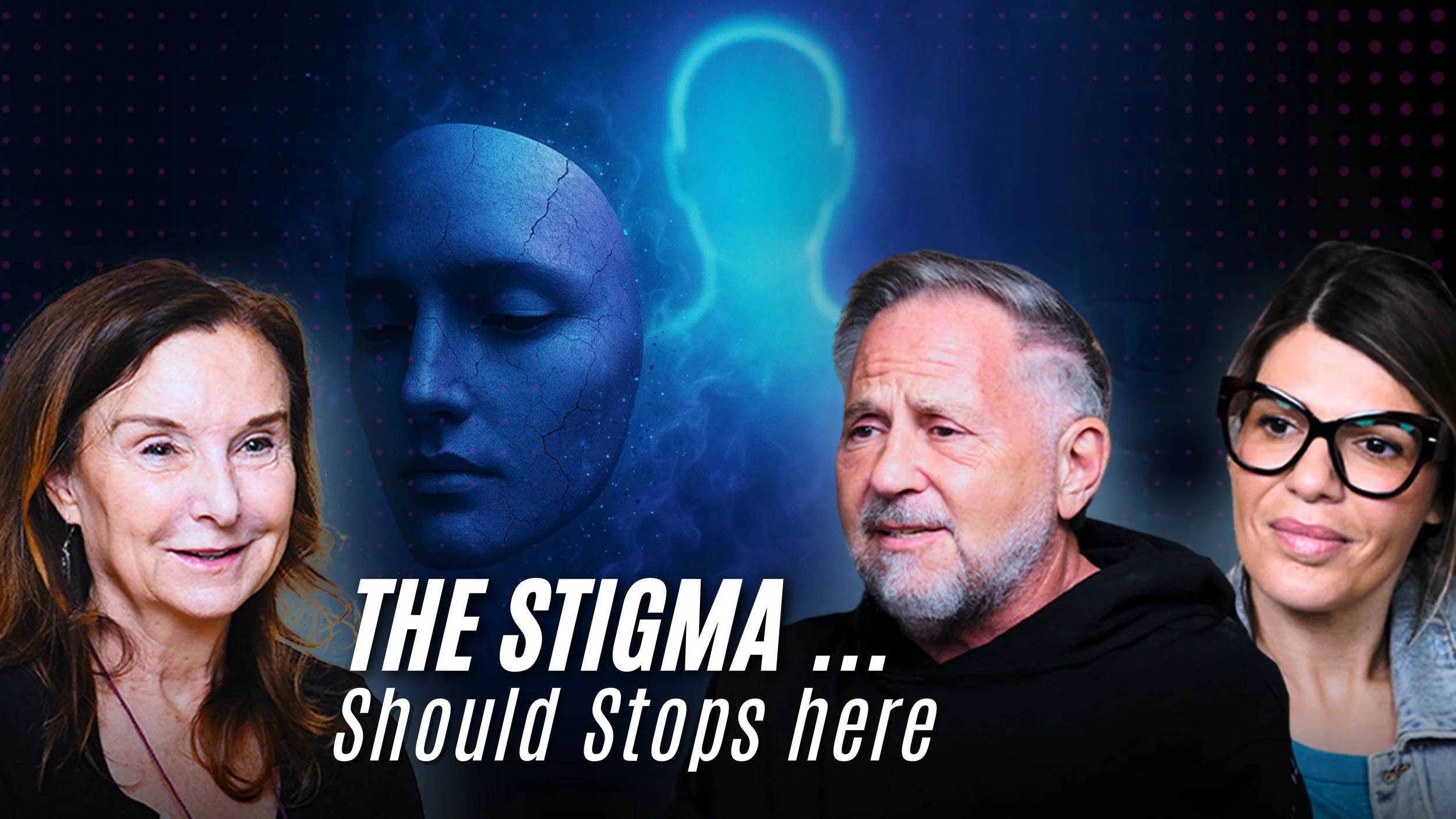How Alcohol Addiction Can Scatter Your Dreams | Shai I.
Listen or watch on your favorite platforms
Meet Shai — a gifted performer whose lifelong dream of becoming an actor was derailed by addiction. Raised between cultures and spiritual teachings, he never quite felt at home in his own skin. What began with underage drinking spiraled into years of substance use, emotional turmoil, and a public breakdown that left him facing prison time and a painful truth about himself.
High Hopes, Low Ends!
Shai grew up straddling two worlds. Raised in a small Pennsylvania town by an Israeli mother and a Pennsylvania Dutch stepfather, his weekends oscillated between synagogue and church. From a young age, Shai felt disconnected and uneasy. "There’s noise in my head," he once told his mother, unable to explain the chaos swirling inside. That inner dissonance sparked a hyper-awareness of his body and mind, birthing what he later recognized as obsession with self. He recalls, “I was constantly thinking about every stomach ache, every twitch, every passing headache—like something was always wrong.”
By the time the internet entered his life at age 13, Shai’s curiosity about escape had a new outlet. He began searching for “legal ways to get high,” desperate to ease the emotional pain that no one else seemed to see.
Encounters with Addiction
Shai’s first true high came in a basement filled with adult men twice his age. “I felt like I had fixed something in me that had been broken forever,” he remembers. Alcohol gave him belonging, identity, and control—at least temporarily. Sneaking sips from his family’s liquor cabinet evolved into blackout nights with “tarantula” shots and Jose Cuervo, where Shai finally felt part of something. That early love affair with alcohol wasn’t chaotic; it was calculated and comforting. But it planted the seed: "That’s the moment it clicked—alcohol had this magic on me. And I always wanted to feel like that."
Consequences!
As a teenager, Shai made a devastating choice: he walked away from his lifelong dream of being a professional actor so he could keep drinking. “I consciously chose drugs and alcohol over my dream,” he says—without hesitation. His spiral was rapid. At 18, he was found in a car filled with drugs and empty bottles, weighing just 90 pounds. He was snorting crushed Adderall, experimenting with crack, and chasing anything that let him feel nothing.
Even years later, during a period where he was running a business, married, and playing music, addiction never truly left. “On paper, I looked like a good guy,” Shai admits. But underneath, selfishness and emotional instability were destroying his marriage. “I found a way to make someone who loved me… not love me anymore.”
Turning Point
The turning point was both shocking and surreal. After mixing Klonopin and vodka during a rage-filled night in Los Angeles, Shai woke up to find he had slashed the tires of 30 cars. “The whole block was outside changing their tires. It was on the news,” he recalls. Arrested and detoxing in jail, Shai found himself in Twin Towers Correctional Facility, a place infamous for its horrific conditions. Suffering from benzo withdrawal, psychosis, and despair, he beat his fists bloody on the cell door and screamed himself hoarse.
And then something shifted. A fellow inmate—kind, gentle, and mentally ill—quietly asked Shai to be quiet so he could sleep. “I felt such shame. Maybe I do belong here,” he thought. Facing four felonies and 12 misdemeanors, Shai stood behind bars, looking through a window into the courtroom. His father, siblings, coworkers—everyone was there. “I’d never felt more pitiful and demoralized.”
The judge gave him a deal: community service, restitution, and a year of dual-diagnosis treatment. But there were no programs like that in LA—so Shai had to piece together his own recovery path. Rehab stints, transitional housing, and outpatient programs—all stitched together to build something sustainable. It wasn’t linear, but it worked. For the first time, he took full responsibility for his condition—not just the drinking, but the behaviors, the thinking, the selfishness.
As he puts it: “Alcohol is just a symptom of the deeper problem. My whole life was one big panic attack. But slowly, things started to lift.”
Final Thoughts
Today, Shai lives a life grounded in honesty, stability, and purpose. He’s sober. He’s clear. And more than anything, he’s connected—to others and to himself. Recovery didn’t just save him—it helped him finally become the man he was meant to be.
What brings him joy now isn’t the high of a substance but the peace of being present. His story reminds us that recovery is possible—even when the damage seems irreparable. Shai says it best: “Whatever this was, I just had that feeling—it’s over. I can finally start again.”
FAQs
What are signs that someone might be struggling with addiction?
Persistent use despite consequences, isolation, emotional instability, and compulsive behavior are common indicators.Can addiction affect high-functioning individuals with careers and families?
Yes—addiction often hides behind success, affecting mental health and relationships before becoming visible.What is dual-diagnosis treatment?
It treats both substance use and underlying mental health conditions like anxiety or depression at the same time.Is jail a common wake-up call for people with addiction?
For many, legal consequences are a turning point—but not the solution without continued recovery support.Can you recover without following a 12-step program?
Yes—there are many recovery paths, and the right one varies by individual.
Related episodes
ABOUT CROSSTALK
CROSSTALK reveals real stories of everyday people and notable figures, sharing their journeys from struggles to life-changing 'aha' moments with all kinds .


 Spotify
Spotify














